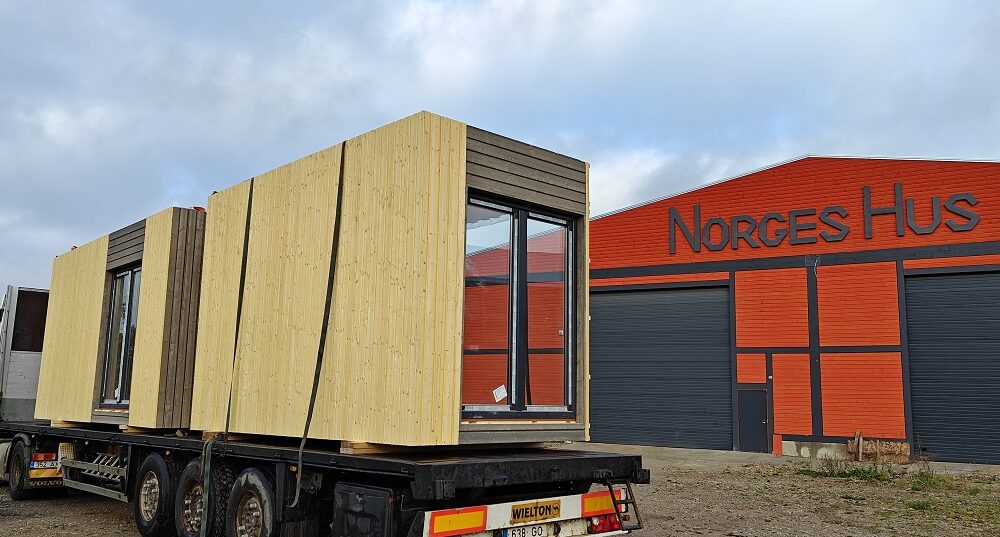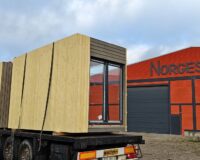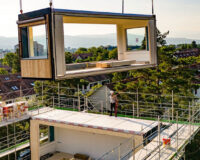Transporting a NorgesHus modular houses is an important part of the overall process of modular home construction.
- Preparation:
Prior to transportation, the modules are prepared for the journey. This involves wrapping them in protective materials to prevent damage during transit. All loose parts and materials are securely fastened or removed.
- Loading
Each module is lifted with a crane or forklift and carefully placed onto a flatbed truck or a specially designed trailer for transport. The modules are then secured to the truck or trailer with straps and other restraints to prevent movement during transport.
- Route Planning
Planning the route to the site is a crucial step. The size and weight of the modules may restrict the routes that can be taken, and any obstructions along the way, such as low bridges or narrow roads, must be considered. Special transportation permits may be required in some areas.
- Transport
The modules are then transported to the site. The transport vehicles are often accompanied by pilot vehicles, which help guide the truck and warn other road users. Special care must be taken during transport to avoid damage to the modules.
- Unloading and Positioning
Upon arrival at the site, each module is lifted off the truck or trailer with a crane and placed onto the prepared foundation. The crane must be operated by a skilled operator to ensure that the modules are placed correctly and not damaged during the process.
- Assembly
After all the modules are placed, they are fastened together and any protective wrapping is removed. Then the finishing work can begin, such as connecting utilities, sealing the seams between modules, and completing any site-built components like porches or garages.
Transportation is a significant factor in the cost and timeline of a modular home project. It requires careful planning and coordination to ensure that the modules arrive safely and are placed correctly. Despite these challenges, the transportation process is usually quicker and less disruptive than traditional on-site construction.











